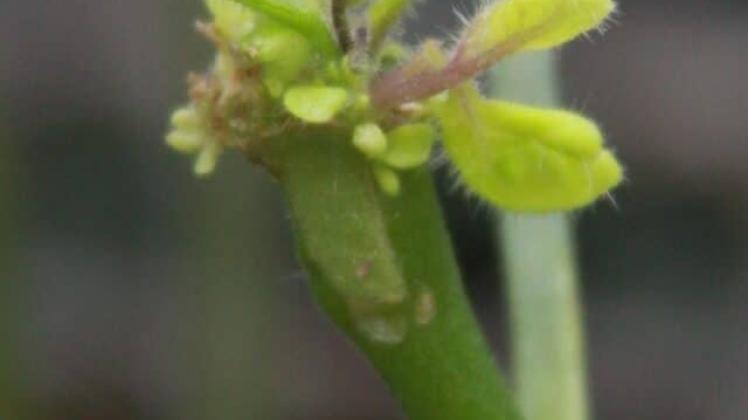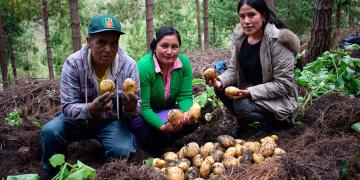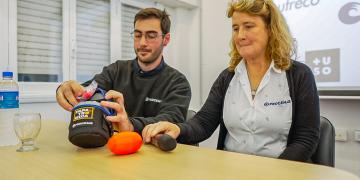Plant Breeding: The first officially recognized skin-transplant potato is launched
KeyGene’s 2S1® technique allows desirable traits from two varieties to be combined in a single plant with genetic stability.

The biotechnology company KeyGene has marked a historic milestone in the world of plant breeding by developing a new skin-transplant potato variety, officially recognized by the Dutch Plant Variety Board, which has granted it breeder’s rights. This is the first grafted hybrid potato of its kind to receive such certification, representing a paradigm shift in the way plant varieties with improved traits can be created.
This innovation has been made possible thanks to the 2S1® technique, a process patented by KeyGene that allows the creation of stable graft hybrids by combining the outer cell layers (skin) of one variety with the inner layers (cork and pith) of another. The result: plants that inherit key traits from both parent varieties in a sustainable and reproducible manner.
What is the 2S1® technique? An unprecedented breakthrough in plant breeding
The 2S1® technique allows for highly controlled cell grafting, something that until now only occurred sporadically and naturally in some fruit trees in old orchards. The novelty is that KeyGene has managed to reproduce this technique rationally and scientifically, with complete control over the desired characteristics.
In this case, the skin of the new variety corresponds to that of the Pimpernel potato, known for its drought tolerance and natural resistance to certain insects, while the interior comes from the classic and widely cultivated Bintje, which offers high production yields, culinary versatility, and good storage.
“We have realized a long-standing dream of genetic improvement,” said Jeroen Stuurman, KeyGene’s principal scientist and one of the creators of this technique. “With 2S1 technology, we can now exploit natural genetic variation in a completely new and efficient way.”
A stable cell combination with commercial potential
One of the most notable aspects of this innovation is the stability of the genetic combination. According to KeyGene trials conducted over several consecutive years of seed potato production, both the resulting plants and tubers faithfully maintain their combination of skin and cell interior.
This is key to its commercial viability, as genetic consistency ensures that farmers and consumers will always obtain the same benefits and characteristics from the variety. The granting of plant breeder’s rights by the Dutch Board certifies this: it is a "distinct, homogeneous, and stable variety" (DUS criteria).
Implications for sustainable agriculture and food security
Drought tolerance and pest resistance, without sacrificing yield
The combination of resistance and productivity is not easy to achieve in the plant world. Often, varieties resistant to water stress or pests have lower yields, while the most productive varieties are more vulnerable. This is where the 2S1® technique shines, by selectively fusing only the desired parts of each variety, similar to precise genetic surgery.
This can have a direct impact on sustainable agriculture, by reducing the need for plant protection products and improving resilience to climate change. In crops like potatoes—of which Europe produces more than 50 million tons annually—this type of innovation can lead to significant resource savings and improved agronomic efficiency.
Future applications: beyond the potato
Potential for fruit trees, berries and other vegetatively propagated crops
The KeyGene team looks beyond potatoes. According to Roeland van Ham, the company’s CEO, the 2S1® technique can also be applied to other vegetatively propagated crops, such as fruit trees, vines, roses, and berries, where the challenge is often to combine resistance and organoleptic quality in a single variety.
“We’re especially excited because this significantly reduces the development time for new varieties. It can take years, even decades, to create a new, stable variety using traditional methods. With 2S1®, that process can be reduced to less than half the usual time,” says Van Ham.
Furthermore, KeyGene researchers are exploring the possibility of adapting this technology to seed-propagated crops, which would represent an even greater leap in the development of solutions for the global agricultural sector.
A “proof of concept” with international projection
Although the new potato variety is currently a proof of concept, it has already demonstrated that the 2S1® technique is viable, effective, and scalable. The next step is its large-scale commercialization, especially in regions where drought and pests hinder agricultural productivity.
KeyGene as a benchmark in genetic innovation
KeyGene, based in the Netherlands, is a plant breeding biotechnology company with decades of experience in genomics, advanced phenotyping, and bioinformatics. Its model is based on collaboration with seed companies, research centers, and governments.
Thanks to this new technology, KeyGene is positioned at the forefront of innovation in plant breeding, with solutions that respond to global challenges such as climate change, pressure on natural resources, and the need to increase food production by 50% by 2050, according to FAO estimates.
Pending challenges: regulation and social perception
Although the cell grafting process does not involve genetic modification (transgenesis) in the traditional sense, there are still legal loopholes surrounding this type of development, especially in countries outside the EU. Organizations such as EFSA and FAO will have to decide how to classify these new varieties and whether they require specific assessments.
Furthermore, social acceptance will be key. In a context where consumers increasingly value transparency and naturalness, it will be important to clearly communicate the benefits and safety of these types of varieties.
Conclusion: An open door to a new era of plant breeding
The granting of plant breeder’s rights to the new hybrid skin-transplant potato variety developed by KeyGene marks a turning point in the history of plant breeding. Its 2S1® technology demonstrates that it is possible to combine desirable traits precisely, stably, and rapidly, without resorting to conventional genetic modification.
In a world facing growing agricultural challenges, this innovation represents a valuable tool for moving toward more efficient, sustainable, and resilient food production.
Fuente: agronewscastillayleon.com




